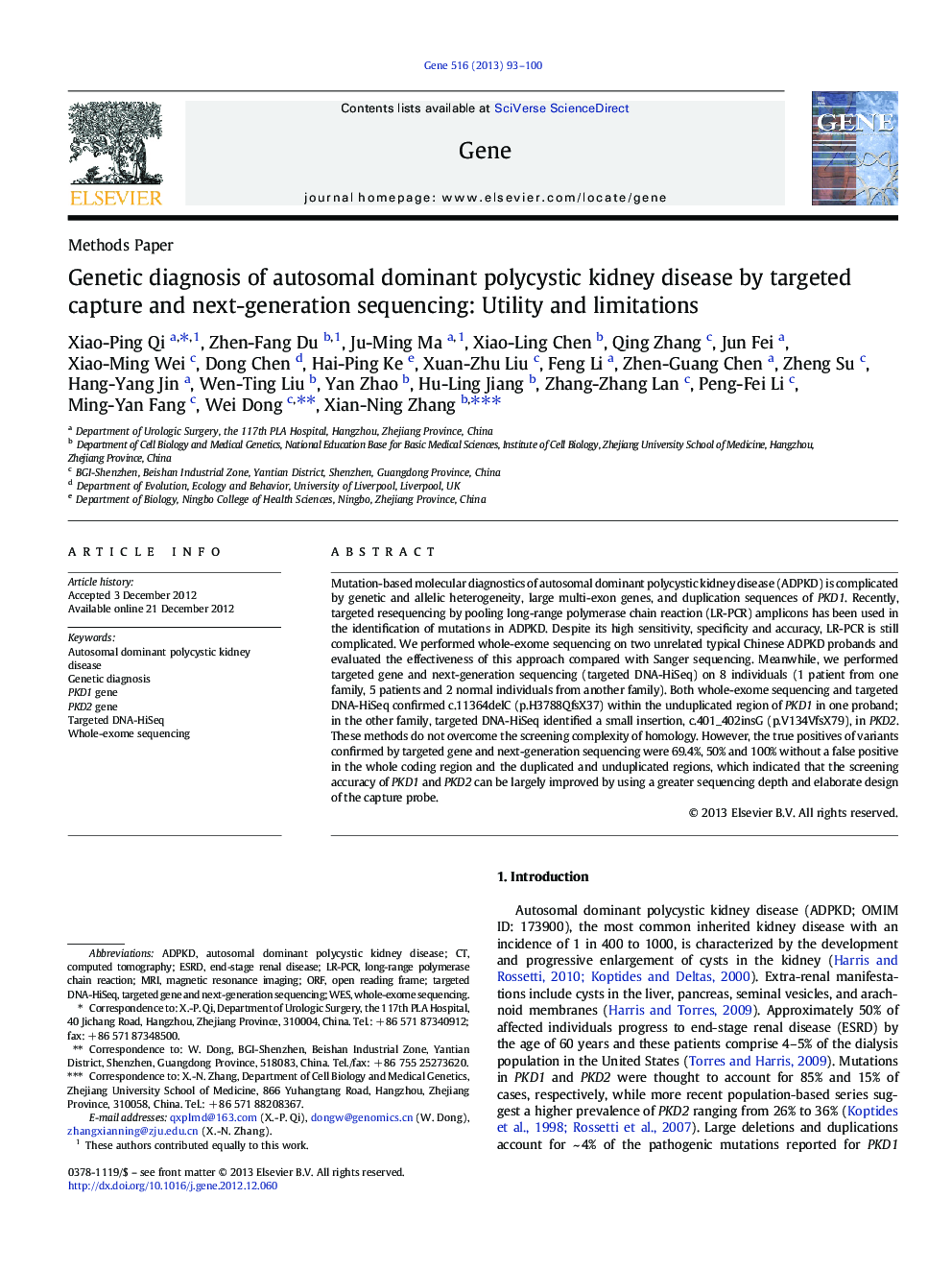| کد مقاله | کد نشریه | سال انتشار | مقاله انگلیسی | نسخه تمام متن |
|---|---|---|---|---|
| 5906752 | 1159984 | 2013 | 8 صفحه PDF | دانلود رایگان |
Mutation-based molecular diagnostics of autosomal dominant polycystic kidney disease (ADPKD) is complicated by genetic and allelic heterogeneity, large multi-exon genes, and duplication sequences of PKD1. Recently, targeted resequencing by pooling long-range polymerase chain reaction (LR-PCR) amplicons has been used in the identification of mutations in ADPKD. Despite its high sensitivity, specificity and accuracy, LR-PCR is still complicated. We performed whole-exome sequencing on two unrelated typical Chinese ADPKD probands and evaluated the effectiveness of this approach compared with Sanger sequencing. Meanwhile, we performed targeted gene and next-generation sequencing (targeted DNA-HiSeq) on 8 individuals (1 patient from one family, 5 patients and 2 normal individuals from another family). Both whole-exome sequencing and targeted DNA-HiSeq confirmed c.11364delC (p.H3788QfsX37) within the unduplicated region of PKD1 in one proband; in the other family, targeted DNA-HiSeq identified a small insertion, c.401_402insG (p.V134VfsX79), in PKD2. These methods do not overcome the screening complexity of homology. However, the true positives of variants confirmed by targeted gene and next-generation sequencing were 69.4%, 50% and 100% without a false positive in the whole coding region and the duplicated and unduplicated regions, which indicated that the screening accuracy of PKD1 and PKD2 can be largely improved by using a greater sequencing depth and elaborate design of the capture probe.
⺠We performed whole-exome sequencing on two unrelated Chinese ADPKD probands. ⺠We performed targeted gene and next-generation sequencing on 8 individuals. ⺠Two methods identified c.11364delC of PKD1 and c.401_402insG of PKD2 separately. ⺠These methods do not overcome the screening complexity of homology. ⺠Greater sequencing depth and well-designed capture probe improve screening accuracy.
Journal: Gene - Volume 516, Issue 1, 1 March 2013, Pages 93-100
